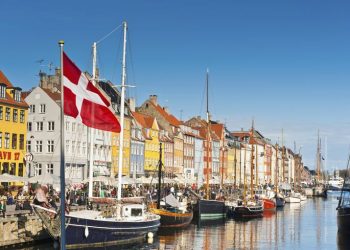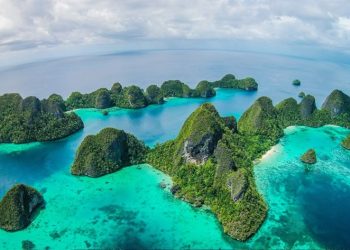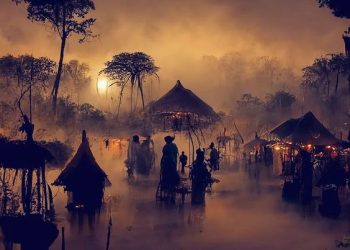Jakarta, Indonesia Sentinel — The Toraja community of South Sulawesi, Indonesia, has long been known for its intricate and deeply symbolic funeral traditions. One of them is the pasiliran, a funeral tradition of burying infants within the trunk of a sacred tree called the tarra tree.
For the Toraja people, death is more than the end of life, it’s an opportunity for a meaningful farewell. Life is considered significant only if one’s death and burial rituals are conducted properly.
Among these is the renowned rambu solo ceremony, where graves are carved into cliff walls. However, another lesser-known but equally remarkable tradition is passiliran, the burial of infants within the trunk of tarra trees, a practice unique to Kambira Village.
Pasiliran Tradition Philosophy
Kambira Village, located in the Sangalla district approximately 20 kilometers from Rantepao, the capital of Tana Toraja Regency, is home to the tarra sacred trees and the pasiliran infant burial tradition exist.
In the passiliran tradition, toothless infants are seen as pure and untainted. Therefore, only infants who passed away before their first tooth will be buried through pasiliran ritual.
According to Indonesia Kaya, the Toraja believed that placing infants in a tarra tree symbolizes returning them to their mother’s womb, with hopes of ensuring healthy births in the future. The tree’s sap is believed to represent a mother’s milk, providing nourishment for the infant in the afterlife.
The tarra tree, used as a burial site, typically measures 80-100 centimeters in diameter. The trunk is carefully hollowed out to accommodate the baby’s body, which is placed upright, reflecting the belief that the child will continue to grow within the tree. The hollow within the tree is then sealed with ijuk (fibers from the sugar palm tree).
Symbolism and Taboos
Unlike traditional coffins, the baby is buried without any coverings, symbolizing its natural state in the womb. The body is positioned to face the family’s home, signifying a spiritual connection with the grieving household. The placement of the burial site within the tree also reflects the family’s social status, with higher positions indicating a higher caste.
Over decades, the tree naturally heals, closing over the burial site while preserving the remains inside. From afar, these trees appear to be patched with black square marks, each representing an infant laid to rest. Despite the hollowing process during the burial, the trees thrive, symbolizing life continuing even in the face of loss.
The burial process is conducted with simplicity, mirroring the purity of the infant’s life. However, the toraja believed that there are several restrictions or taboos that the family must adhere in the pasiliran tradition.
Mothers are traditionally prohibited from visiting the burial site for a year after the funeral, a custom believed to increase the likelihood of future healthy births. Cutting down a tarra tree is strictly forbidden, as it is believed to sever the infant’s journey to the afterlife.
Read also : Toraja Death Festival: A Journey into Indonesia’s Secred Funeral Traditions
Living Legacy
The Torajan people not only fear loss but also harbor a deep anxiety about dying at the wrong time. By burying infants within a living tree, they believe the child becomes one with the tree, which serves as a second womb.
This “second womb” is seen as allowing the child to grow strong, symbolizing perfection. As they believed, “When the tree dies, the time for a proper death has been fulfilled.”
Despite no longer being practiced, the passiliran burial sites continue to hold deep cultural and spiritual significance. For the Toraja people, the tarra tree represents more than a resting place—it embodies the perfection of life and death, the unity of the physical and spiritual, and the timeless cycle of existence.
The passiliran tradition is reserved for followers of Aluk Todolo, the ancestral belief system of the Toraja. Today, the tarra trees remain as silent witnesses to this unique tradition, drawing visitors intrigued by the Toraja’s cultural heritage.
(Raidi/Agung)

























